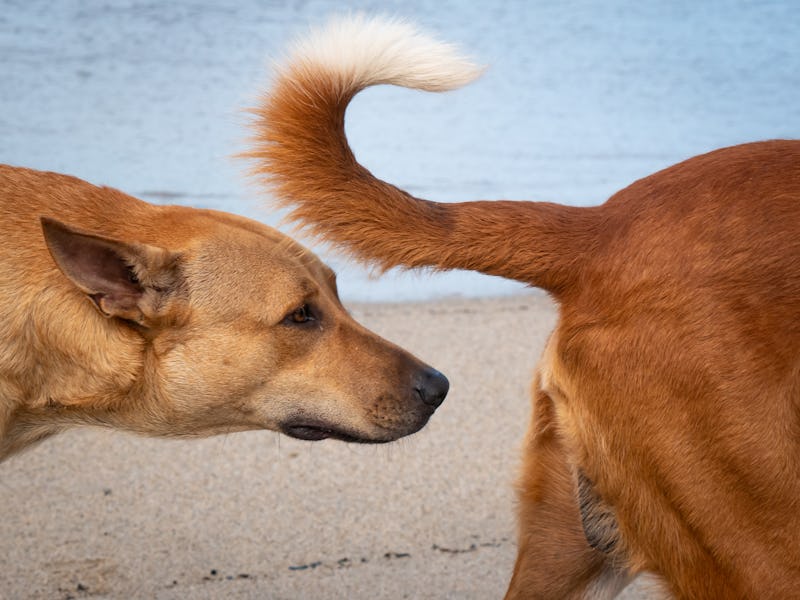Should you let your dog sniff other dogs’ butts? There may be a hidden risk
Some dogs can get a contagious form of cancer on their face.

Normally we don’t think of cancer as an infectious disease — but what if we told you there is contagious cancer, thousands of years old? This cancer is not, however, caused by the transmission of a virus. These are cancer cells that can be physically passed on between dogs.
In our new study, we found that male dogs are four to five times more likely than female dogs to be infected with the oral and nasal form of canine transmissible venereal tumor (CTVT). The cancer cells are passed between dogs by sniffing other dogs’ genitals.
Credit: Emma Werner.
CTVT mostly affects the genital regions, leading to the formation of unsightly tumors, and is usually passed on during mating. Sometimes, the CTVT cells can affect other areas such as the nose, mouth, or skin. Although CTVT is a common disease affecting thousands of dogs on all continents, the oral and nasal version is rare. Mouth and nose tumors are transmitted when one dog sniffs the CTVT-infected genitals of another dog.
In our database of nearly 2,000 CTVT cases, only 32 of these affected nose or mouth. Meanwhile, 84 percent of the dogs with the nasal or oral form were male.
This research was carried out at the Transmissible Cancer Group, University of Cambridge, which is led by Professor Elizabeth Murchison.
Behavioral differences between the sexes may contribute to this risk. For example, male dogs seem to have a preference for sniffing or licking female genitalia, compared to vice versa. Female genital tumors, which are more exposed, may also be more accessible for sniffing and licking, compared to the male genital tumors, which are often hidden within the sheath.
An ancient cancer
The most common symptoms of the facial versions of the cancer are sneezing, snoring, difficulty breathing, nasal deformation or bloody and other discharge from the nose or mouth. With treatment, the vast majority of dogs recover.
CTVT cells under the microscope.
This cancer breaks the mold in another way: CTVT is extremely old. It came from the cells of a dog that lived several thousand years ago and passed on to another dog. Genetic evidence shows it was probably a husky-like animal in central or northern Asia. The living cancer cells have been hopping from dog to dog ever since, like a parasite. When we look at the present-day CTVT tumor cells under a microscope, we are in fact looking at the cells of the dog that lived thousands of years ago. All current forms of CTVT can be traced back to the same ancient dog.
A global parasite
CTVT affects dog populations across the globe, yet is mostly linked to countries with free-roaming dog populations. It is not established in the UK — but cases have risen in the past decade, possibly due to the increasing popularity of adopting rescue dogs from abroad.
However, it must be noted that CTVT remains extremely rare in the UK. The chances of cancer becoming established in the UK are tiny because there isn’t a free-roaming dog population.
Better health screening for imported dogs would help to diagnose and treat CTVT cases before they have a chance to spread. Awareness among vets and owners could also help to catch cases early.
Transmissible cancers are also found in Tasmanian devils and mollusks such as mussels and clams. We do not know of transmissible cancer that would exist in humans.
CTVT is the oldest cancer lineage that scientists know of. It could help us learn important information about how human cancers work, too. Some of the processes that are noticeable in CTVT due to being thousands of years old, may also be happening in human cancers, undetected.
This article was originally published on The Conversation by Andrea Strakova at the University of Cambridge. Read the original article here.
This article was originally published on